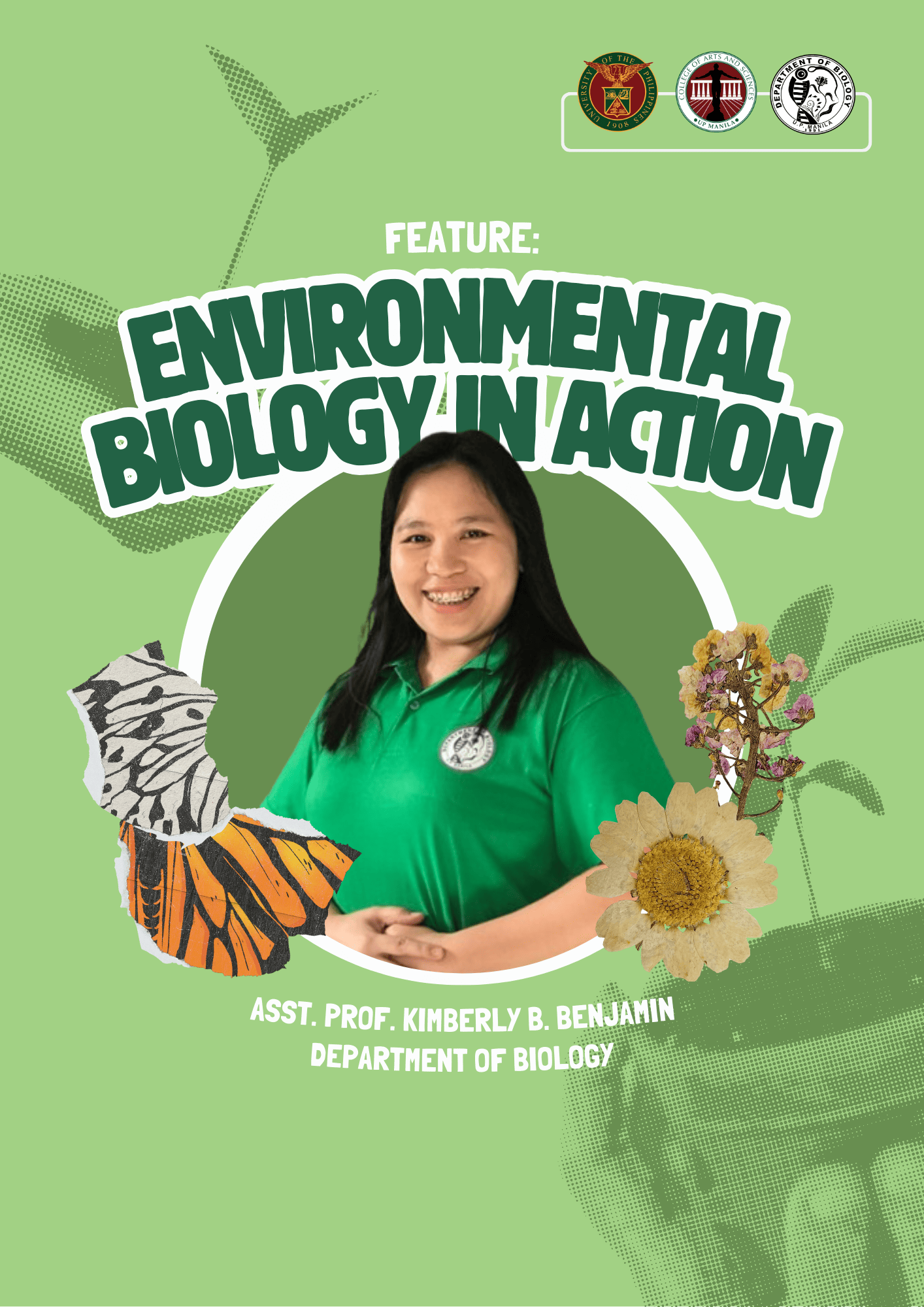In Feature: Environmental Biology in Action

One way of measuring the quality of higher education institutions is by looking at their research activities and outputs. The College of Arts and Sciences (CAS) aims to promote a culture of research where faculty members from its six departments and students are supported, developed as competent, and innovative researchers.
Assistant Professor Kimberly B. Benjamin, a faculty members under the Environmental Biology Unit of the Department of Biology, who has made significant scientific contributions, focusing on the field of environmental science and ecotoxicology. She has co-authored seven publications. Her recently published research entitled, “Bishphenol S Increases Cell Number and Stimulates Migration of Endometrial Epithelial Cells”, aimed to determine wether bisphenol S (BPS), a common substitute for bisphenol A (BPA), induces cell proliferation and migration in human endometrial epithelial cells (Ishikawa) and adult mouse uterine tissues.
The findings of her study showed that BPS exhibits similar effects to BPA. Specifically, BPS can induce the proliferation and migration of endometrial cells, a process that is reminiscent of the first stages of endometrial cancer and adenomyosis. Findings of her study showed the need to reassess the use of BPS-containing products, which are chemical agents, as it may pose adverse reproductive health effects to humans.
BPA is a commonly occurring industrial chemical that is present in polycarbonate plastics and epoxy resins mechanistically shown to affect various bodily functions of organisms.
In the study entitled, “Histopathological Effects of Bisphenol A on Soft Tissues of Corbica fluminea Mull”, Asst. Prof. Benjamin and her colleagues, analyzed the toxicity of BPA through its histological effects on the gills, digestive glands, and adductor muscles of Corbicula fluminea, a freshwater bivalve. It was concluded that BPA was found to be toxic to these bivalves as evidenced by histology. Moreover, the differential histological responses of the tissues of the C. fluminea in different concentrations of BPA proves that they are good indicators of environmental stressors.
Article Written by Dina Estanislao
